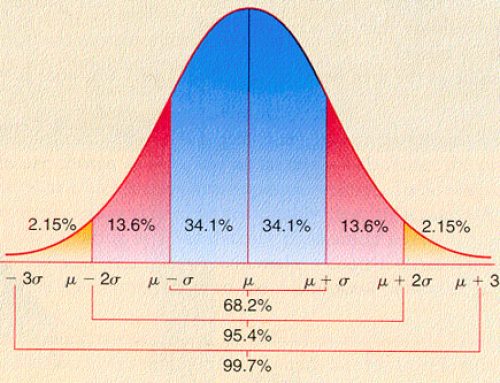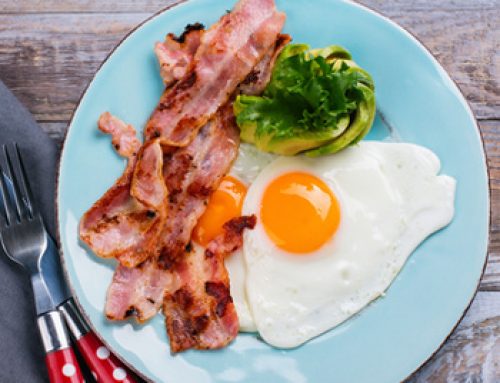In the 2nd and final part of the Fat Burning Secrets Revealed Interview, you’ll discover the “real” deal about low carb diets and the surprising reason why they sometimes work better than conventional diets, but NOT for the reasons most people think… and you’ll get Tom’s top 5 tips for fat burning training, including how to use “High Density Training (HDT) to accelerate your fat loss from the workouts youre already doing
“Fat Burning Secrets Revealed – The Interview”
Featuring Chris Mohr, PhD, R.D.
www.meal-plans-101.com
With Tom Venuto, CSCS, NSCA-CPT
www.BurnTheFat.com
Chris Mohr: What’s the deal with low carbs–are they all their cracked up to be?
Tom Venuto: Reduced carb dieting can definitely improve fat loss, but it may not be for the reasons that some people think. Remember we said that the bottom line is calories in versus calories out? Well, low carbers usually don’t want to admit this – they usually want to insist on “metabolic advantage” – but the fact is, one of the biggest reasons that low carb diets can help improve fat loss is because its very difficult to overeat when you restrict an entire group of energy dense foods like carbohydrates.
If you put any restriction whatsoever on fat intake on top of that, then it’s virtually impossible from a practical standpoint to overeat. See how hard it is to eat in a calorie surplus if you’re only allowed to eat lean protein, salad veggies and green veggies with a little bit of essential fat. You’re going to lose fat like crazy on a diet like that, but its not necessarily because carbs are low, it’s primarily because CALORIES are low. The problem is a diet like that is hardly sustainable.
That said, there are some advantages of a lower carb diet. For one, a low carb diet, tends to be higher in protein. Since protein has a much higher thermic effect, it can lead to slightly greater fat loss than a diet of the same calorie amount that is high in fat and carbs. There are also quite a few studies showing that lean protein is very effective at blunting appetite, so by eating lean protein with every meal and taking a slightly higher intake of protein, you effectively control appetite. You also tend to get better glycemic control with reduced carbs, so there may be some body composition advantages to that as well. But again, the real bottom line is calories, not carbs.
Very low carb or ketogenic diet programs often tell you not to count calories and say you can eat as much as you like if you just stick to protein and fat. They are making a huge assumption that by restricting carbs and allowing high fat intake, your appetite will regulate itself and you will automatically eat in a deficit as a result. This is often exactly what happens with low carb, high fat diets, which put no limits on your calories, but there is nothing about a low carb diet that allows you to eat unlimited calories. If you eat in a surplus, you are going to gain weight, no matter what the macronutrient composition of the diet.
Chris Mohr: What are your recommendations for how much protein someone should eat when shedding body fat?
Tom Venuto: We could give a recommendation by percentage of total calories or by grams per pound of body weight. One gram per pound of bodyweight is a pretty good guideline, although if someone is a serious competitive bodybuilder, I wouldn’t hesitate to say 1.25 or 1.5 grams per pound. If someone were using a very low carb diet, then I also wouldn’t hesitate to go 1.25 to 1.5 grams per pound because the higher protein offsets some of the drop in carbs. If you like to prescribe protein as a percentage of total calories, 30% of total daily calories is usually a pretty good guideline if someone falls within the average ranges for body weight and energy expenditure, and maybe as high as 40% when on a reduced carb program.
I realize there are some drawbacks to giving protein intakes by percentage, but the same could be said for giving protein recommendations by grams per pound of body weight as well. For example, if you have an obese 400 pound man, do you give him 1 g per lb of bodyweight? Each method has pros and cons so every situation has to be taken individually.
Chris Mohr: Off nutrition for a bit–what are your 5 most effective training tips for fat loss?
Tom Venuto: First is to include weight training as a way to maintain or increase lean body mass, which will help maintain optimal metabolism long term. I’m still shocked at how many people are still not doing any weight training and they’re focusing only on diet or diet plus cardio.
Second is to include primarily compound, multi joint, basic free weight exercises. If you’re a bodybuilder, you’ll also be doing isolation exercises and working the small muscles like calves on a body part basis, but the isolation work and machine work shouldn’t take precedence over the basics, which involve more muscle mass, burn more calories and stimulate metabolism more.
Third is to increase the density of your weight training. High Density Training (HDT) means more work in less time. Instead of making workouts longer, you do more work in the same time or even in less time. This can be achieved by decreasing rest intervals and by using a lot of superset training. When you combine the use of supersets or other types of density training with the compound exercises, the results are even better still.
Fourth is to do at least some of your cardio with intensity. All activity will contribute to fat loss, but in a linear fashion. With high intensity comes an exponential increase in results. Common sense alone says that if you work harder, you will burn more calories and therefore more body fat. The problem is many people still believe in the fat burn zone which suggests that you have to intentionally slow down and exercise at low intensity to burn fat because when you exercise at high intensity, you burn more carbs. The problem with this line of thinking is that the lower your intensity, the fewer calories you burn overall and therefore the less fat you burn. Most people think exclusively of high intensity interval training when they think of high intensity cardio, but I’ve found that regardless of whether you use intervals or maintain a steady pace, either way, if you simply push yourself harder, you burn more calories and more fat.
Fifth is when you want to create a change in your body, do all your training with progression and variation. It’s impossible to improve workout performance at a constant rate forever, but during periods when you want a major body change, your goal should be for each workout to build on the previous one. A lot of people ignore this and they continue to repeat the same workouts they’ve done in the past and wonder why they keep getting the same results. The body adapts to everything in time and the longer you’ve been training, the faster it adapts. Workout routines need to be changed often and that includes exercises, sets, reps, rest intervals, tempo and every other variable. Remember, do what you’ve always done, get what you’ve always gotten.
Chris Mohr: Tom, I know that you take a mind-body approach to fitness and that you’re certified not only in fitness training but also hypnosis and NLP, so let me ask, what role does behavior play—can you change someone’s thoughts and mind about fat loss?
Tom Venuto: Most people think behavior is changed with willpower and in fa
ct, willpower does gets you started, but it doesn’t keep you going. Only habit keeps you going. The true source of your behavior is the subconscious mind, and a habit is a behavior pattern fixed in the subconscious mind. If someone wants a permanent behavior change, whether it’s trading in white sugar for fruits and vegetables or trading in some TV time for gym time, a change has to take place in the mind first.
The conscious mind is the part we are aware of and which we think and rationalize with. The non conscious is the same part that’s responsible for the autonomic functions of the body. If you think about that, it makes sense then that the non conscious part of the mind is the part responsible for automatic behavior as well. If your mind can circulate your blood, digest your food and release hormones for you without you having to think about it, then certainly it can put mundane daily behaviors on auto pilot as well. And it does –that’s called habit.
The majority of what we do every day – probably 90% of our actions – are patterns which we repeat without thinking about because they are generated on a non conscious level. As long as old thought and belief patterns are in the non conscious mind, old behavior patterns will keep running. And this explains why so many people start out with guns blazing but they can’t stay on a diet or exercise program long term.
This is not psycho-babble either; the scientific community has studied this problem and concluded that the reason diets fail is lack of compliance. Some programs are obviously better than others because they are lifestyle based and not quick fixes, but research has shown that virtually any of the popular diets today can work if there is a calorie deficit. The problem is, few people can stick with any diet for long. If you can master compliance and master your habits, you can master your weight.
The secret is not teeth-gnashing willpower, the secret is to change the subconscious pattern and that’s done by changing what you think, what you say aloud and what pictures you make in your mind. Whichever thoughts you think and whatever pictures you make over and over in your mind get programmed into the subconscious as instructions.
So if you struggle with compliance and permanent behavior change, you really have to take up a program of mental training right along with the physical training. Whenever I see someone and I know they have a solid training program, and if they got their nutrition program from a guy like me or you, Chris, we know they’re eating properly, but if they keep falling off the wagon and they lack consistency in behavior, I know that person has probably neglected the mental training side of things. That’s why my BFFM program has 4 key elements for fat loss success:
- Nutrition
- Cardio training
- Strength training
- Mental training.
Almost all the top pro and Olympic athletes in the world do mental training and take it very seriously, but most other people either ignore or are simply unaware of how important this 4th element is. Put the mental training element together with a winning nutrition, cardio and strength training program and you can develop virtually any physique that is within your genetic limits.
For more information about Burn The Fat, Feed The Muscle (BFFM), visit: www.BurnTheFat.com
About Dr. Chris Mohr:

Tom Venuto is a lifetime natural bodybuilder, an NSCA-certified personal trainer, certified strength & conditioning specialist (CSCS), and author of the #1 best selling diet e-book, Burn The Fat, Feed The Muscle. Tom teaches you how to lose fat without drugs or supplements using the little-known secrets of the world’s best bodybuilders and fitness models. Learn how to get rid of stubborn fat and turbo-charge your metabolism by visiting www.BurnTheFat.com, home of Burn The Fat, Feed The Muscle and www.BurnTheFatInnerCircle.Com, the Internet’s premier members-only fat loss support community.







Not sure if this will get through but want to thank you for your no nonsense approach to getting fit and burning the fat! Am 52 but feel and look years younger thanks to good nutrition and fitness.Don’t forget how important the 4th element – the MIND – is with any programme… because different diets and training programmes suit different people, but we all need to use the power of our minds.
“MIND EXERCISES,” MAN DO I NEED TO LEARN MORE ABOUT THAT. WHERE DO YOU SUGGEST I START. THANKS
re: “Mind Exercises”, chapter 1 of my book Burn The Fat, Feed The Muscle is as good a place to start as any.Also take a look at the links to my “success mentors” in the lower right hand corner of this site…and also take a peek at Scott Tousignants new site, ‘Unstoppable Fat Loss.” He just launched it a few days ago… all about the mindset:http://www.unstoppablefatloss.com/mindset/3
Tom, I’ve been reading your books, articles and interviews for a while now and always get new information and/or validation from them.I have to say that the whole cardio issue really gets my head spinning. I kept reading about the shift from carbohydrate metabolism toward fat metabolism during prolonged exercise and how the body burns a higher fat % at 70% target heart range and that it takes about 90 min to get to the 100% fat burning…..see what I mean? Reading your above comment tells me the bottom line is burn more cals= burn more fat. Thanks for that! I can ignore the numbers and equations and just push myself and get good results…yes?Also, I have to say thank you, thank you for the 4th element. I was a true non-believer who tried it because I’ve tried everything else(within reason). I’ve always enjoyed resistance more than cardio so my first mental tape was, “I love cardio”. I just repeated it over and over and over and it worked. I can’t imagine my day without it now. My second tape was, “sugar is poison” which for me is true, but now after repeating that tape over and over, sugar has lost all appeal to me.It never ceases to amaze me that when I let go of my way of doing things and embrace the professionals way, I get much better results. I only think I know my body better than everyone else, lol!Thanks!
I have just changed my eating pattern to higher calories and higher proteins after reading about half the “Burn the Fat” book. I have also gone back to the gym after about a 7 year layoff. I am doing mostly compound exercises and supersetting so my whole body workout is about 65 minutes. I am training 3 days a week now and I am impressed at how quickly I have been able to increase weights. At 59 and a female the guys in the gym are applauding me for my consistant effort. I lost 20 kilos in 8 months., from 102 Kilos to 8o kilos, but then plateaued for 4 months. I am gaining weight but losing body fat now and I am no longer scared of the weight increase on my scales as I feel more energetic and fitter. Friends say I look 10 years younger and I feel it. Thanks Tom
TOM YOU ARE AWESOME!Finally someone who actually knows what they are talking about and isn’t afraid to say it! I watch infomercials and literally yell at the tv when “health and fitness” products, with their ridiculous miracle results, are shoved down the throat of unsuspecting consumers. Your training and nutrition advice is right on and I truely admire your recognition of the importance of mental training. Afterall what is the point of having all the knowledge if you cant bring yourself to sustainably put it into action!Keep up the great work!Darryn Collins,Christchurch, NZ
3 years on from my last comment. I am feeling better than ever. Thank you Tom for all your advice. Never stop doing what you do